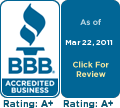
|
||||||
|
|
PEOs, ASOs, & Other Staffing Arrangements and their unique problems with workers' compensation insurance In the course of our work here at AIM, we've had occasion to work with a number of alternative employers--more commonly known as PEOs (Professional Employer Organizations), temporary agencies and other kinds of staffing companies. PEOs essentially provide employee leasing to employers, where via a legal agreement the PEO becomes a "co-employer" with the client employer. Unlike a temp agency, under a PEO arrangement the full-time workers at a company also become the employees of the PEO, and the PEO provides the Workers Compensation coverage, pays for unemployment insurance, and handles various other tax matters for the client employer. Under an ASO arrangement (Administrative Services Organization) there are great similarities to services provided by a PEO, but under an ASO there isn't a "co-employment" agreement. Under an ASO, the client employer is still responsible for obtaining Workers Compensation coverage of their own. Still, many ASOs help individual employers obtain Workers Compensation coverage for themselves, often through a "pay-as-you-go" system that adjusts monthly charges for Workers Compensation as monthly payroll amounts fluctuate. This obviates the need for premium audits at the end of the policy, and avoids (at least in theory) unpleasant surprises when the audit bill arrives. Both PEOs and Temporary Agencies have a shared quality in regards Workers Compensation insurance: both temporary agencies and PEOs often have a large number of classification codes on their policies, to reflect the diverse workplace exposures of their client companies. Where a typical manufacturer might have only two or three different classifications on their policy (and even a contractor might have only four or five classifications) these kind of employers can have dozens--even hundreds--of different classification codes on their policy. cation codes on their policy. At one time, insurance companies had a tendency to treat such policyholders a little casually at audit time, pretty much accepting whatever classification codes these employers had assigned for clients' workplace exposures. But that "laissez-faire" attitude has disappeared, and nowadays it is much more common for insurers to want to enforce the letter of the law when it comes to classification codes for such policyholders. This change in attitude is due largely to NCCI and member companies becoming alarmed, in the early 1990's, about what they termed "premium leakage" from such policyholders. It was felt that such employers were often not paying the proper workers' compensation insurance premiums. And since such employers were often in the assigned risk plans, it was felt that this premium leakage was severe enough to cause significant problems for these programs. The problem, however, is that while NCCI and insurers now enforce classification rules strictly at audit, many alternative employers had never been given adequate guidance regarding how to properly classify exposures. Thus, many of these alternative employers can find themselves in serious trouble because they've been left to use their own best (often limited) judgment regarding proper classifications during the policy term, yet after the policy term the auditor enforces classification rules strictly. Such audits can develop large additional premium that was never charged to the client (because the temp agency or PEO used the wrong classification code when they were developing what fee to charge their client for workers' compensation costs). What can be done to avoid this trap? There a couple of steps we recommend to such alternative employers. First, order copies of the manual published by NCCI, Scopes of Manual Classifications. This provides detailed information about what is intended to be covered in the various classifications. Of course, this manual is only useful if you are dealing with an NCCI state. The majority of states use the NCCI system, but there are also significant exceptions. California rules can be different from NCCI rules in important details. Pennsylvania and Delaware use their own non-NCCI classification system. But if your policy covers NCCI states, ordering the Scopes manual from NCCI can be very helpful. Another resource regarding classification is the NCCI itself. NCCI can be called on their toll-free line, 1-800-NCCI-1234. You can ask to discuss with someone there what classification code should be used for particular risks. For non-NCCI states, call your state's rating bureau. We also recommend that you don't hesitate to call your insurance company and discuss proper classification with an underwriter there. Make sure to document such conversations, and request any classification guidance be provided in writing, in case of future dispute at audit. e of future dispute at audit. The rules concerning Workers' Compensation insurance classifications can be arcane and even counter-intuitive. Given the strict enforcement attitudes taken by NCCI and its member insurers, alternative employers would be well advised to learn as much as they can about classification rules. Ignorance and honest mistakes can be costly at audit time, as a number of alternative employers have been finding out in recent years. More information on the subject is available in this Wikipedia article. You can find more information on this subject in our Field Guide for Employers, or call AIM at 1-800-288-9256 or email aim@cutcomp.com.
Consultants on Workers Comp Classification Codes, Experience Modifiers, Payroll Audits, & More We've been helping employers since 1987, making Advanced Insurance Management one of the oldest and most experienced firms in the field of premium recovery.
|
|



